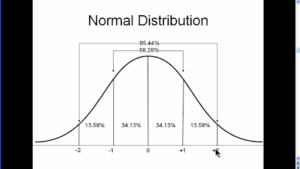Khamelia Jones
Caitlin Geoghan
FIQWS 10113 MED3
1 November 2020
Miss America Pageants Construct Normalcy
In the reading “Constructing Normalcy” Lennard J. Davis discusses how the idea of normal continues to develop through history. He compares the idea of normalcy to being average. Society determines what the average is so if someone does not fall into the bracket of average, they are considered abnormal. This idea places pressure on people who are abnormal to alter their appearance so they can fit in. Davis emphasizes that those who are considered abnormal are not the problem but “the way normalcy is constructed to create conflict with these people is the problem” (Davis 1). Society’s act of promoting normalcy is evident in Miss America pageants. Miss America pageants depict what an average body size in America looks like. This causes anyone outside of this average body side to consider themselves as abnormal. Society’s promotion of “normalcy” is evident in the Miss America Pageant as they construct a “normal” body size of women in America.
In “Constructing normalcy”, Davis focuses on the idea that normalcy has developed throughout history. Davis begins to discuss how Greek artists constructed “the perfect man” through sculptures (Davis10). This shows that the population without this body type are below the ideal and must conform to fit in. Davis then introduces the idea that “the bell curve became a symbol of the tyranny of the norm” (Davis 13) (Figure 1). Those who fall under what is standardized are considered deviants. To stray away from this negative classification one must become part of the norm. This classification of “deviant” was viewed as negative because eugenicists grouped together all undesirable traits (Davis 17). Therefore, if you did not have normal traits you were grouped with being poor or criminal. The hatred for these groups also grew hatred for those who were classified as deviants. This placed pressure on those who were considered deviants. Eugenicists’ goal of eliminating undesired traits influenced following generations. This means that the idea of normalcy was translated to succeeding generations.
Compared to Davis’ view that normalcy is passed to future generations, the evolution of how normal or average American women should look is showcased by the Miss America Pageant. The pageant originated in 1921 and still exists in modern day. In 1921, when this pageant first began, it only allowed young white women who never had an abortion to participate( Insider, Shaw). It faced major criticism from religious, women groups and was cancelled in 1927. However, it returned for good in 1935 with new rules for contestants. In 1938 each contestant had to be between ages 18-28 and participate in the newly added talent section (Insider, Shaw). In 1947, they added a section that required all contestants to wear two-piece swimsuits. In 1948, the Miss America Pageant received their first Asian-American contestant. Cheryl Browne became the first black contestant of Miss America in 1971. Vanessa Williams was crowned the first black Miss America in 1984. After 1985, the pageant stopped putting contestants’ measurements in the program in efforts to remove focus on physical appearance (Insider, Shaw). This timeline shows how the Miss America Pageant has evolved through history. This change is minimal as there is still a low representation of people from diverse backgrounds on the show. The proportion of POC contestants were lower in relation to white contestants. There was an even lower proportion of POC winners compared to whit winners.
In “Constructing normalcy”, Davis’ idea that normalcy is generated by society is supported by the effects of the Miss America Pageant. With the Miss America Pageant being broadcasted to the public, women are “forced” to look at these contestants as a representation of how women should look in America. Although most may not agree with the way this creates an “average” or a “standard” body size it is difficult to avoid being that it is publicly spread over wide-ranges. Thus, increasing pressure on women who do not fit into the “standard” body size. When reviewing the history of this pageant it started out with the contestants being only white women who has never had an abortion. Women in this time period who do not fit into this category would consider themselves as inferior or abnormal. Davis states “This type of normativity in narrative will by definition create the abnormal” (Davis 22). Though the Miss America Pageant is not a written narrative, it supports Davis’ idea that the normalcy it creates also creates the abnormal. The pageant received its first African-American contestant in 1971. From the year the pageant started –1921– till 1971, African Americans had no representation in the pageant. For a contest that is said to promote what the average and normal woman in America looks like, not seeing a single face that looks like yours could cause you to feel like an outcast. According to Davis, you would be considered abnormal and “deviant”–the term that is grouped with criminals.
It was proved that the Miss America Pageants displayed the contestants’ “bust, waist, and hip measurements” until 1985 (Insider, Shaw). This shows that there was a preference of body size in each contestant. Before 1985, a person who did not have this standardized body size could not become a contestant in the pageant. Once again, these people would be considered abnormal or “deviant”. It is said that obesity today is prominent in poor societies due to affordable fast food (Insider, Willett). This contributes to these people being viewed as deviant–term grouped with poor–because they don’t have the “ideal” body shape. In order to remove this classification women would try and fit the “ideal” or “average” body type. In doing so, increased health problems in women emerged. Some methods taken to lose weight were unhealthy. For example, diagnosis of eating disorders such as bulimia nervosa and anorexia nervosa heightened in women. Other health problems that could have arisen in women were depression, anxiety and low self-esteem. In relation to this topic, a woman seeing that she is underrepresented and unqualified to participate in these pageants could cause her to develop these self-conscious health issues. This supports Davis’ argument that “the way normalcy is constructed to create conflict with these people is the problem” (Davis 1). The normalcy that is constructed in Miss America Pageants is the problem because it causes the creation of abnormality and it is the root of the internal struggles that “deviant” people face.
Davis’ idea that normalcy is generated by society is supported by the effects of the Miss America Pageant. With the Miss America Pageant being broadcasted to the public, women are “forced” to look at these contestants as a representation of how the “average” American woman should look. By the Miss America Pageant constructing a “normal” body size that American women should compare themselves to, self-conscious emotions cause health issues to rise in women. These are said to be the effects of past pageants because it has developed throughout the years. Although the Miss America Pageant has evolved, the changes are minimal because today the body types of these contestants are still unvaried and considered to be thin (Figure 2). This supports Davis’ view that normalcy permeates our temporary life and will continue to progress (Davis 26). In order to solve this we must “reverse the hegemony of normal” (Davis 26).
Figure 1

Figure 2

Works cited
“Constructing Normalcy.” Enforcing Normalcy: Disability, Deafness, and the Body, by Lennard
- Davis, Nota, 2016,
“Redirect Notice.” Google, Google, 2011, www.google.com/url?sa=i.
Shaw, Gabbi. “THEN AND NOW: How the Miss America Pageant Has Changed over the Years.” Insider, Insider, 18 Dec. 2019, www.insider.com/miss-america-pageant-changes-evolution-2018-9.
Willett, Megan. “One Chart Shows How Unrealistic Miss America Has Become.” Insider, 11 Sept. 2017, www.insider.com/miss-america-body-size-compared-to-average-woman-2016-9.
vanvurc. “Reading Review- Lenard Davis’ Constructing Normalcy | Disability Rhetoric.” Reading Review- Lenard Davis’ Constructing Normalcy, 13 Mar. 2018, wp.wwu.edu/w18eng401/2018/03/13/reading-review-lenard-davis-constructing-normalcy.
Yahr, Emily. “- The.” Washington Post, 2018, www.washingtonpost.com/gdpr-consent/?next_url=https%3a%2f%2fwww.washingtonpost.com%2fnews%2farts-and-entertainment%2fwp%2f2018%2f06%2f05%2fmiss-america-eliminates-swimsuit-competition-and-wont-judge-contestants-on-physical-appearance%2f.


